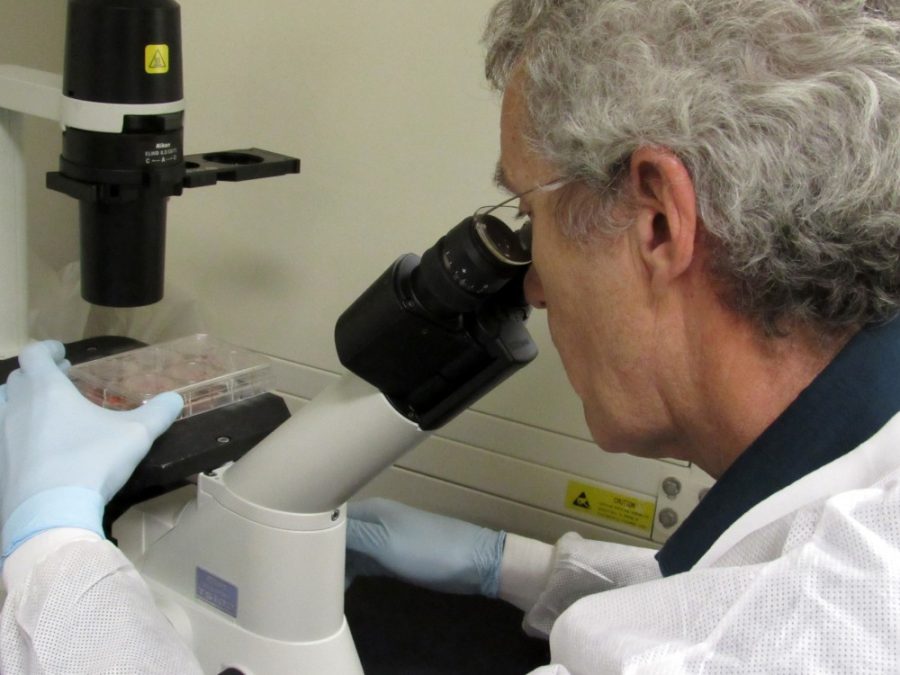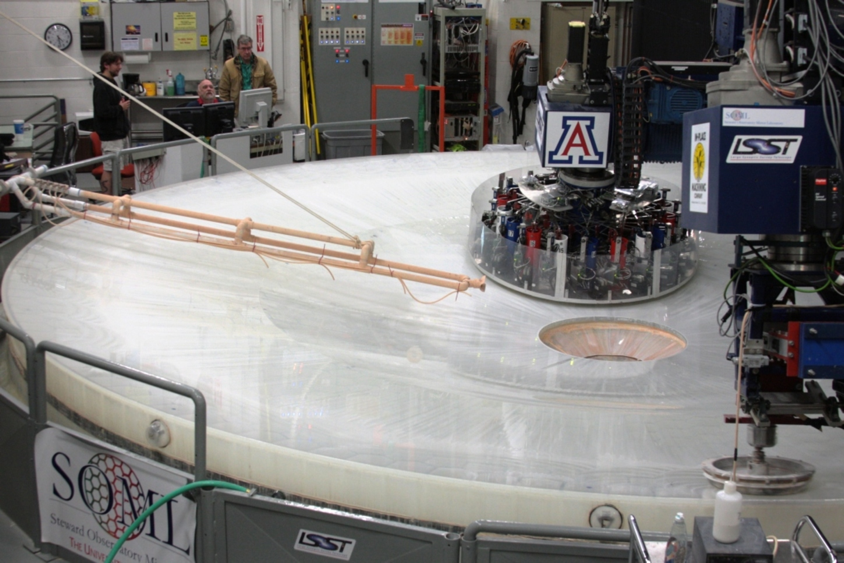A new genome editing technology known as CRISPR has the potential to revolutionize the way scientists study diseases and genetics.
“I think it’s a really useful tool for science, in fact it’s sort of revolutionizing the speed at which we can accomplish certain things in the laboratory and it has tremendous potential for therapeutic applications,” said Kimberly McDermott, a research associate professor of medicine and an associate professor of cellular and molecular medicine, cancer biology and genetics.
Clustered Regularly Interspaced Short Palindromic Repeats, or CRISPR-Cas9, is based off a bacterial immune system, said Thomas Doetschman, professor of cancer biology, genetics and cellular and molecular medicine.
When bacteria become infected by a virus, they take pieces of the virus’s DNA and incorporate it into their own genome. This allows the bacteria to recognize and attack the virus if it ever appears again. This system allows them to destroy the virus, but it also allows them to destroy DNA, Doetschman said.
In developing CRISPR, scientists took a hint from the bacteria.
“What it [CRISPR] actually does is causes a mutation at that site, in the DNA, and then repairs it,” Doetschman said. “And you can repair it in different ways, such that you can actually modify the sequence of the DNA.”
This has enormous implications for the study of genetics and combating human diseases. And while it may sound exciting, human gene editing isn’t all fun and games.

There are two ways the CRISPR technology can be used in humans, Doetschman said. The first way is to alter somatic cells, which don’t get passed down to the next generation. This would only affect the patient who is receiving the treatment. The second way, known as the germline, can have serious long-lasting effects. Altering genes in the germline can produce permanent changes in the patient that will then be passed on to their children.
“There’s two completely different ways of doing this, and the real concern, the big concern, is that it be used by some unscrupulous people to try to change the germline of people, so that you can create progeny that will all have this kind of modification,” Doetschman said.
CRISPR isn’t just for humans; it can be used to edit plant cells as well.
“It could alter genes in a plant so that the plant either becomes resistant to or susceptible to agents that might otherwise kill the plant,” Doetschman said. This could mean disease-resistant plants or increased nutritional content.
One of CRISPR’s greatest contributions is in the realm of research, specifically for understanding normal development and disease processes, McDermott said.
For example, in the future scientists may be able to grow human organs from the patient’s own cells, using CRISPR.
RELATED: Beefy bugs: antibiotic-resistant bacteria pose threat to health
Recent studies on mice and rats have introduced the possibility of using a model organism, such as a pig, to grow human organs, McDermott said.
Another exciting possibility available through CRISPR involves induced pluripotent stem cells, Doetschman said. This process essentially works as a time machine for your cells.
Doetschman describes it as the ability to put your own cells, such as skin cells, in culture and de-differentiate those cells back down to the pluripotent “master key” stem cell, using CRISPR. Once your adult cells are transformed into stem cells, you can make the genetic modifications you’d like, such as correcting a mutation, and then re-differentiate the cells back into the cell type of the tissue you want to correct.
These cells could potentially be engrafted back into the patient’s disease tissue, Doetschman said.

When it comes to working with human therapeutics, safety and regulations are extremely important, McDermott said.
As scientists, their primary concern is to minimize and prevent harm in every way possible. One of these regulations is a patent that was recently issued to the MIT and Harvard-affiliated Broad Institute, one of the centers responsible for creating CRISPR technology.
RELATED: UA researchers win NIH grant for autoimmune disease work
Despite heavy public controversy surrounding the patent, Doetschman said the patent is a good thing, because it will allow scientists to ensure that CRISPR research is carried out in a safe way, especially in regards to human use.
“I think from a scientist’s perspective, the thing that we’re really focusing on is trying to listen to our colleagues but also the public in general about what are the fears of this technology,” McDermott said. “Of course when you start to edit genes and mutate genes there’s a lot of concerns about what might happen.”
As for the future of human genetics research, both Doetschman and McDermott remain optimistic. CRISPR improves both the efficiency and the accuracy of genome research.
McDermott said while scientists may have had the ability to make mutations in cells in the past, the results were usually inefficient and could produce off-target effects.
CRISPR might not be the cure to every disease, but it is the key to unlock many avenues of research, Doetschman said.
“In terms of the research end of science and medical research, it’s expanding tremendously the scientist’s ability to ask questions about genetic disease,” Doetschman said.
Follow Hannah Dahl on Twitter.









